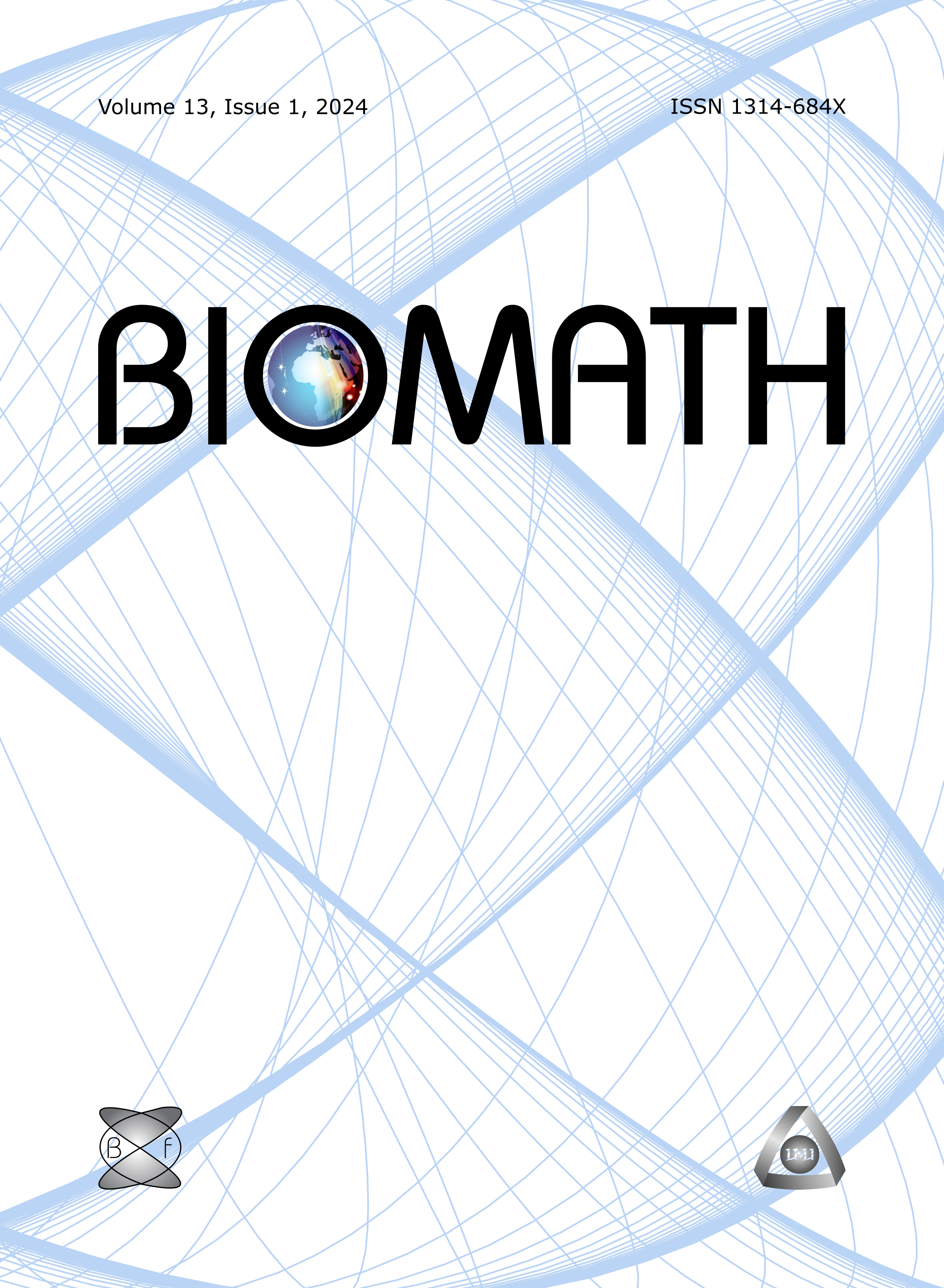Mathematical Modelling of HIV-HCV Co-infection Dynamics in Presence of HIV Therapy
DOI:
https://doi.org/10.55630/j.biomath.2022.07.158Keywords:
HIV/AIDS, HCV, co-infection, reproduction number, sensitivity analysis, therapyAbstract
In this work, we formulated and analysed a deterministic model to study the HIV-HCV co-infection dynamics in presence of HIV therapy. The HCV chronic stage was split into two periods: the period before and the period after onset of cirrhosis. This was done because the HCV chronic stage of infection is long, asymptomatic and infectious. The effective reproduction numbers, one of our outcome measures, were computed using the next generation matrix method. Numerical simulations were performed to support the analytical results from the model. The different parameters in the model were subjected to a sensitivity analysis to determine their relative importance on the HIV-HCV co-infection dynamics. The results indicated that both HIV and HCV infections enhance each other; and in the long run, increasing the rates at which people are put on HIV treatment reduces the prevalence of HCV in the community; however, it increases the prevalence of HIV. Therefore, there should be increased safer sexual behaviour campaigns among individuals on HIV treatment.
Downloads
Published
Issue
Section
License
Copyright (c) 2022 Edison Mayanja, Livingstone S. Luboobi, Juma Kasozi, Rebecca N. Nsubuga

This work is licensed under a Creative Commons Attribution 4.0 International License.
The journal Biomath is an open access journal. All published articles are immeditely available online and the respective DOI link activated. All articles can be access for free and no reader registration of any sort is required. No fees are charged to authors for article submission or processing. Online publications are funded through volunteer work, donations and grants.
Authors who publish with this journal agree to the following terms:
- Authors retain copyright and grant the journal right of first publication with the work simultaneously licensed under a Creative Commons Attribution License 4.0 that allows others to share the work with an acknowledgement of the work's authorship and initial publication in this journal.
- Authors are able to enter into separate, additional contractual arrangements for the non-exclusive distribution of the journal's published version of the work (e.g., post it to an institutional repository or publish it in a book), with an acknowledgement of its initial publication in this journal.
- Authors are permitted and encouraged to post their work online (e.g., in institutional repositories or on their website) prior to and during the submission process, as it can lead to productive exchanges, as well as earlier and greater citation of published work (See The Effect of Open Access).

